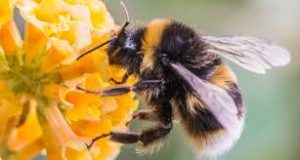09
Apr
Tell Congress to Sign UN Biodiversity Convention
 (Beyond Pesticides, April 9, 2018) A new international study finds that the unsustainable exploitation of natural resources worldwide has reached critical proportions, causing biodiversity loss and land degradation that threaten the food and water security of an estimated 3.2 billion people. Congress must act for the U.S. to become a signatory to the United Nations Convention on Biodiversity, joining the global community in working to develop and implement solutions to the biodiversity crisis.
(Beyond Pesticides, April 9, 2018) A new international study finds that the unsustainable exploitation of natural resources worldwide has reached critical proportions, causing biodiversity loss and land degradation that threaten the food and water security of an estimated 3.2 billion people. Congress must act for the U.S. to become a signatory to the United Nations Convention on Biodiversity, joining the global community in working to develop and implement solutions to the biodiversity crisis.
The Intergovernmental Science-Policy Platform on Biodiversity and Ecosystem Services (IPBES) report unearths the crisis faced by two-fifths of the world’s population due to the worsening of land degradation, declining species biodiversity, and the intensification of climate change. Though the report presents a bleak picture of how humans have substantially degraded the natural resources essential to survival, it holds up indigenous knowledge and land-use practices as potential models for how to use natural resources for human benefit, while still protecting biodiversity. However, the cultures that possess this knowledge are also in jeopardy. More than 60 percent of indigenous languages and cultures in the Americas are declining or dying.
In addition to detailing the root causes of biodiversity losses and ecosystem damages, the report also examines the social, cultural, political, and economic influences that can affect long-lasting change. Central to the extensively peer-reviewed report is a strong and often-repeated message that the window of opportunity for reversing land degradation and its impacts is closing. The report’s Chair, Robert Watson, PhD, warns that, “We must act to halt and reverse the unsustainable use of nature –or risk not only the future we want, but even the lives we currently lead.”
Biodiversity has been most strongly affected by agriculture, followed by forestry, infrastructure development, urban encroachment, and climate change. The resultant reduction and elimination in the suitability of habitats is the major cause of biodiversity losses. IPBES identified a nearly 40 percent decline in the average population size of wild terrestrial vertebrate species and an 81 percent decline in freshwater vertebrate species between 1970 and 2012. UN Administrator of the Development Program, Achim Steiner, argues that “Biodiversity and the ecosystem services it supports are not only the foundation for life on Earth, but critical to the livelihoods and well-being of people everywhere.”
Agriculture affects biodiversity through use of pesticides and fertilizers in chemical-intensive farming, and direct destruction of habitats in order to expand farmland. Concrete solutions offered in the report include: halting agriculture expansion into native habitats, improving soil health, conservation agriculture, shifts toward integrated crop, livestock, and forestry agriculture, more plant-based foods, and food waste reduction.
Chief among the cultural drivers of land degradation is the high-consumption lifestyles of people living in advanced industrialized countries, the growing consumption in emerging economies, and increasing population growth. All of these behaviors cause land degradation through natural resource and mineral extraction and by fueling agricultural and urban sprawl. Such activities have left less than 25% of the Earth’s surface free from degradation, mostly in deserts, tundra, mountains, and polar -regions.
Authors of the IPBES report have dubbed its findings “a wake-up call for all of us.” It will also undoubtedly serve that function for the 198 parties to the Convention on Biodiversity who will be attending the upcoming meeting in Egypt in November of this year. Aided by conclusions drawn from the report, agreements will be made on targets for improving biodiversity and strengthening compliance with the treaty. Although the U.S. is a party to the convention, it is not a signatory, which means that it is not legally bound by treaty provisions.










